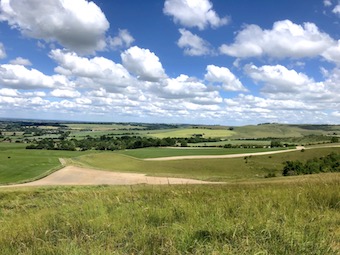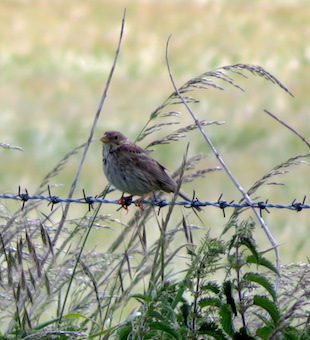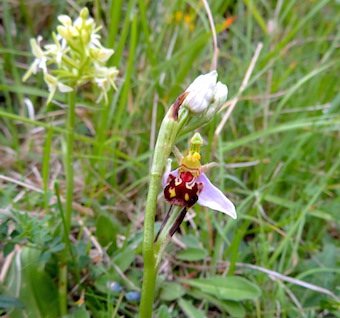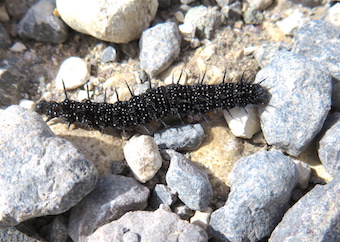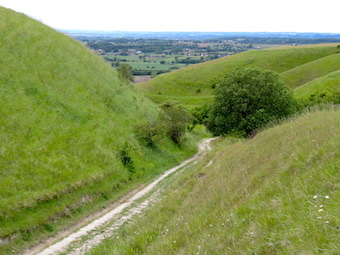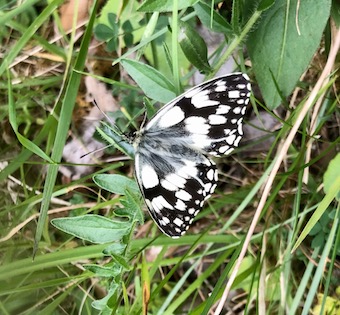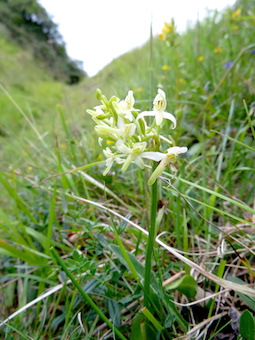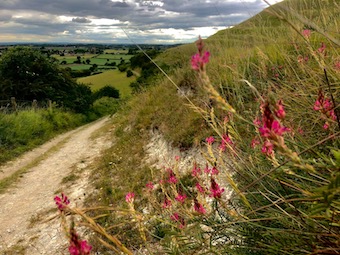First published in: The Times Click here to view a map for this walk in a new window















Sunk deep in the green downland valley of the River Frome lies Maiden Newton, a sprawling village, with its church tower upstanding yet far below the skyline. Dorset dialect poet William Barnes caught the scene in his poem ‘The Fancy Feäir’:
‘The Frome, wi’ ever-water’d brink
Do run where sholvèn hills do zink,
Wi’ housen all a’cluster’d roun’
The parish tow’rs below the down.’
We found the brink of the shallow, gravel-bottomed River Frome well watered, and well muddied too. It was a squelch and a splosh up the riverside path to Cattistock. Sir George Gilbert Scott designed Cattistock’s church with a remarkable tall tower. It beckons you into the crooked street of the village that William Barnes called ‘elbow-streeted Catt’stock.’
Cattistock has kept its village amenities intact – church, post office, cricket field, Fox & Hounds inn, and an active pack of fox hounds. We heard them give tongue from their kennels as we headed east up the chalk grassland slopes of Lankham Bottom.
The low angle of the winter sun made relief models of the field boundaries on the downs, their shadows stark against the green slopes. The tattered old hawthorns that marked out the path were in full crimson berry, and mistle thrushes dashed among them like busy Christmas shoppers, never pausing for more than a moment.
Up at Stagg’s Cross we braved the rushing traffic tide of the A37, then sauntered along a forgotten old strip of road where moss grew through the tarmac and down across the pastures to where Sydling St Nichols unravelled along its watercress stream.
Ancient Court House Farm and tithe barn lay together alongside a church guarded by fat-cheeked gargoyles choking on their waterspouts. As we sat in the church porch a terrier came wriggling up, very keen to find out what was in our sandwiches (it was ham and mustard).
The Wessex Ridgeway hurdled us back across the downs, a broad and muddy old track in a sunny green tunnel of trees that rose to the ridge and fell away west towards Maiden Newton. The western sun turned all the clipped hedges to gold, and over the invisible sea beyond the hills to the south a strong clear coastal light silvered the base of clouds slowly building out there.
How hard is it? 8½ miles; easy downland tracks; some muddy and puddled stretches.
Start: Maiden Newton railway station, Dorchester DT2 0AE (SY 598979)
Getting there: Rail to Maiden Newton; Bus 212 (Dorchester-Yeovil)
Road: Maiden Newton is on A386 (Crewkerne-Dorchester)
Walk (OS Explorer 117): Down Station Road; left at junction. In 100m, right past church; left (597979, ‘Wessex Ridgeway’/WR, ‘Frome Valley Trail’ fish arrow waymark). In ¾ mile, right at road (590988); in 650m under railway; left at junction (592993). In 100m, left (‘Macmillan Way’); fork left in Cattistock churchyard; ahead up street. Just beyond Post Office, right by Rose Cottage (591998, ‘Staggs Cross’); follow bridleway to pass Manor Farm. On up Lankham Bottom; in 700m by metal gate on right, half left (604000) past post, up slope to gate (606002). On to gate onto road (612005); right to cross A37 (613004). Follow old road; left at junction (620002); in 600m, right (626001, gate with shackle) across 2 fields; left along farm track (628998). In 200m, right (630998, stile) to junction (630994); keep ahead; in 100m, right (kissing gate, ‘Breakheart Hill’). Left down east end of church; cross stile; right on track for 550m to meet Wessex Ridgeway (627993). Left; follow WR for 2 miles back to Maiden Newton.
Lunch/Accommodation: Fox & Hounds, Cattistock DT2 0JH (01300-320444, foxandhoundsinn.com)
Info: Dorchester TIC (01305-267992)




















